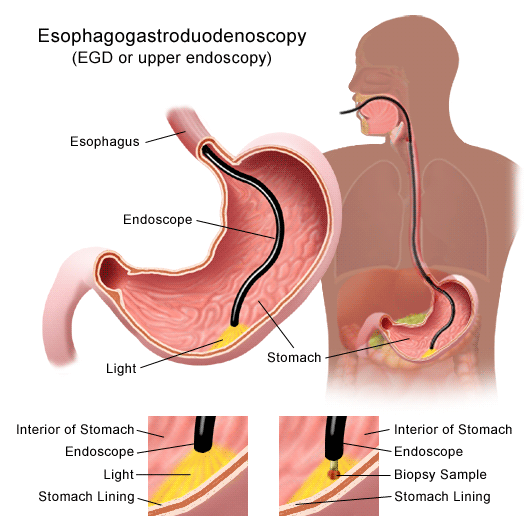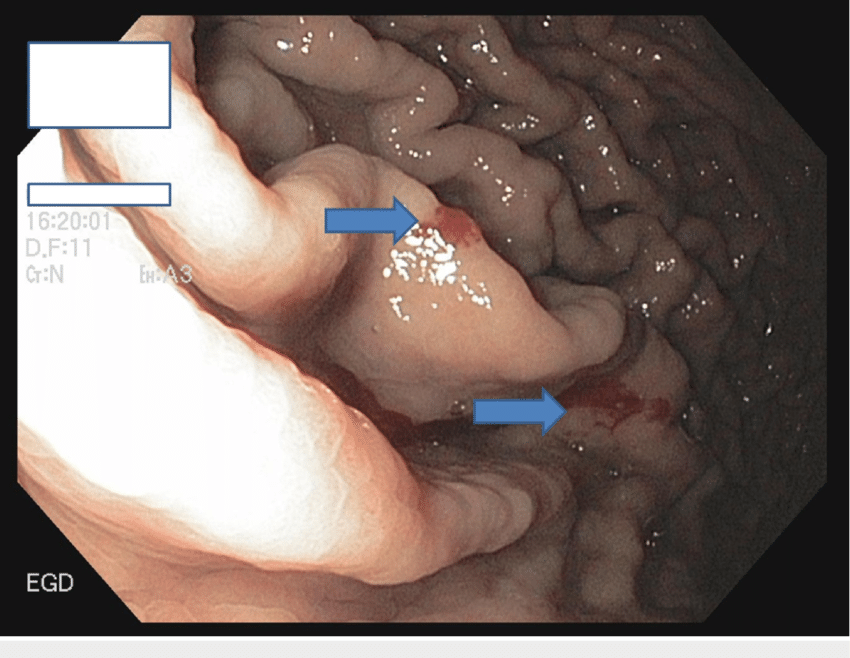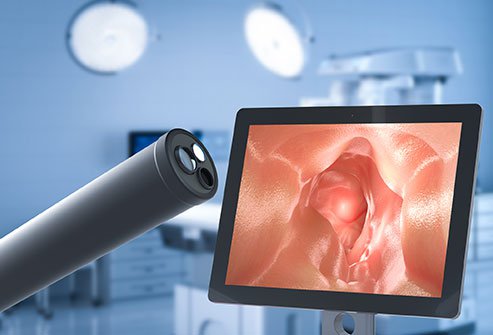What is an upper GI endoscopy or EGD?
An upper endoscopy, known as an upper GI endoscopy or esophagogastroduodenoscopy (EGD), is a medical procedure that can identify issues in the esophagus (a tube-like portion of your throat that helps you swallow), stomach, and upper small intestine. For patients who need more of their small intestine examined, a deep endoscopy (small bowel endoscopy) might be warranted. A routine upper endoscopy procedure involves your Century GI Gastroenterologist carefully inserting an endoscope through your mouth and esophagus to examine the inside of your body. The endoscope is a small, specialized tool that can visualize the inside of your stomach and intestine without the need for surgery.
Why is an upper endoscopy performed?
The upper endoscopy procedure is needed when the stomach, esophagus, or upper small intestine (known as the duodenum) requires a thorough examination. Most commonly, the upper endoscopy helps your doctor to determine the condition behind one of the following digestive symptoms:
- Abdominal pain
- Dysphagia/Trouble swallowing
- Blood in stool
- Heartburn/GERD
- Nausea/Vomiting
- Decreased appetite/Weight loss
- Anemia
Your doctor might also recommend an EGD to help with a biopsy test, in order to treat an ulcer or other condition, to remove food or an object that is causing a throat obstruction, or to help make an accurate diagnosis of one of the following digestive conditions:
- Tumors or precancerous growths
- Polyps
- Ulcers
- Celiac disease
- Inflammation
- Throat infections
- Abnormal throat narrowing
What does an upper endoscopy or EGD test involve?
Before Your EGD/Upper Endoscopy
It is important that your stomach is completely empty before undergoing your EGD. You’ll be given specific instructions on what to eat and what not to eat before your EGD exam. Usually, it involves fasting for a period of about 8 hours prior to your procedure. Speak with your doctor before your appointment for more details and to ask any questions you may have before your EGD appointment.
During Your EGD/Upper Endoscopy
Just before your upper endoscopy, you will be given a sedative to help you relax and to ensure that you are not experiencing discomfort during the procedure. During the procedure, the small, flexible endoscope is inserted through your mouth to reach the esophagus and stomach. You will still be able to breathe as normal, as the tool is very small and won’t disrupt your airway. Usually, the procedure is done within 30 minutes but could be longer or shorter depending on your particular diagnostic or monitoring needs. After the EGD, you will be able to go home with the help of a friend or family member to drive you while your sedation wears off.
What are the advantages of having an upper endoscopy at Century GI?
Choosing to undergo an upper endoscopy at an endoscopy center can provide you with the following benefits:





